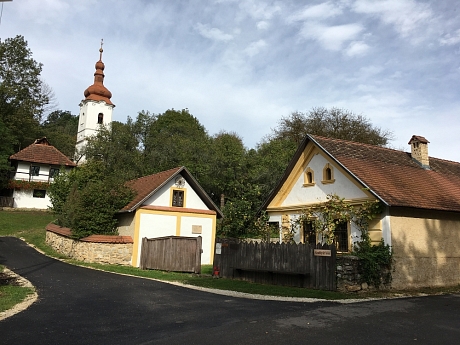Conservation of artefacts, and a museology pilot project in Jósvafő Country House Museum
Conservation of artefacts, and a museology pilot project in Jósvafő Country House Museum
Noémi Fancsalszki – Viktória Kmellár
The Central Directorate of Hungarian Country House Museums (MTKI) operating in the Hungarian Open Air Museum, and the Branch of Applied Arts Object Conservation – Hungarian University of Fine Arts realised a joint Art Conservation and Museology pilot project on 23-26 September 2018 in Jósvafő Country House Museum. The programme was implemented for the first time – though only with the participation of restoration students on that occasion – in the autumn of 2017 in the Endrőd Country House Museum in Gyomaendrőd. The participants of the workshop practice in Jósvafő were the fourth year restoration students of the Hungarian University of Fine Arts, as well as ethnography students of the University of Debrecen and the University of Szeged, a total of 12 students. The aim of the pilot project was to get the restoration students acquainted with the method of risk assessment, and the museological revision of the artefacts of the country house museum. The heads of the restoration department of the pilot project were dr. Katalin Orosz, head of the Applied Arts Specialisations, and Zsuzsanna Várhegyi, head of the Leather Restoration Specialisation. The museological tasks were performed by dr. Ibolya Bereczki, Deputy Director General for Sectoral Tasks of the Hungarian Open Air Museum, and Andrea Papp, museologist at the Museum of Mining History and the Jósvafő Country House Museum.
The participants got acquainted with the exhibitions of the country house museum, the circumstances of its establishment and took a walk in the village on the first day. The restoration students formed two groups. One group worked in the country house museum and the other in the barn. Students assessed the risk factors by examining the natural environment and the building, classified them, and then developed suggestions for the solution. Cleaning of items that required little equipment but immediate intervention was performed. In addition to dusting, mould and other infections were removed where it was necessary. Due to artefact protection considerations there was also a need for a slight rearrangement of the exhibition showcasing local industry.
The ethnography students worked in three groups and performed revisions of about 600 ethnographic objects of the three rooms of the country house museum (room-kitchen-room). The inventory of the collection was also available in an excel spreadsheet in electronic form. The data of this spreadsheet were complemented with the position of the objects (by defining A-, B-, C-, D wall), their present condition, and the expansion of description of the inventory where it was necessary. In justified cases, the damaged inventory number on the item was also corrected. During the revision, objects not previously digitised were also photographed. The same was done for uninventoried and demonstration objects. The completion of the revision was recorded by stamping in a printed inventory book. Museology students and MTKI staff also discussed the possibilities of renewing the exhibition of the country house museum.
The Jósvafő Country House Museum had been founded and operated by Péter Szablyár, who was the managing director of the Association of Hungarian Country House Museums. The governing of the country house was taken over by the Foundation for Reformed Youth in Abaúj (ARI) after his death. During the break of work, Arnold Mező Reformed pastor presented the short history of the church and the village, as well as the burial tradition of wooden grave markers. With his guidance, we also had an opportunity to visit the renovated Reformed Church in Tornakápolna. Thus, the students got to know the settlement and its surroundings.
One afternoon during the workshop, the group instructors with the participation of the students, held an information session for the local community about the work in the country house museum and its results so far. In addition to the works carried out, some suggestions were also made to the governing body concerning the preservation of the artefacts.
As a continuation of the programme, on 16 January 2019, a half yearly exam for the fourth year students of Restoration of Applied Arts Specialisation, University of Fine Arts, was held when the students reported on their work performed during the workshop practice. The risk factors that damage the condition of the artefacts in the country house museum were described, and then the proposals for solution developed by them were orally presented at the exam, and were also handed in in written form. In the country house museum, the students also noticed the presence of harmful substances that required more intervention. Proposals for these were also formulated, which were presented at the exam and also prepared in writing. Vivien Pajtók, an ethnography student, who took part in the exam, gave an introduction to the country house museum in her presentation, as well as her proposals for the renewal of the exhibition. The exam concluded with a presentation by two employees of MTKI, Noémi Fancsalszki and Viktória Kmellár, who described their proposal for the renewal of the exhibition as well as the first version of the related tender schedule.
After completing the exam, the staff of the Directorate of Country House Museums and the head of the Department of Restoration of the University of Fine Arts, as well as its lecturers agreed on the continuation of the project. It is significant momentum for those who run country house museum because we plan to pass on to them the museological experience gained in the one-week workshop practice. Restoration students got to know the specific artefact environment of the country house museum, so later the country house museum managers can turn to them in the case of art conservation issues.
| |








